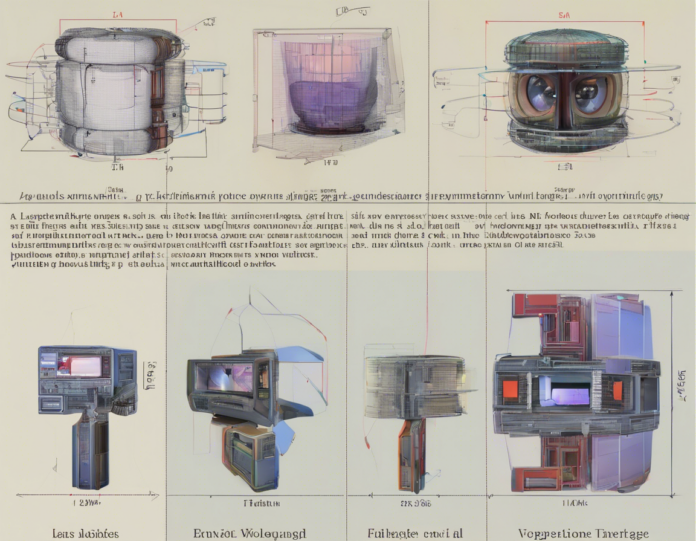A convex lens is a transparent material bound by two spherical surfaces with at least one of the surfaces bulging outwards. This type of lens is thicker at the center than at the edges and is often referred to as a converging lens due to its capability to converge light rays that pass through it. When a convex lens is used in conjunction with an object, it has the ability to create magnified virtual images. Understanding the principles behind the formation of such images is fundamental to grasping how convex lenses operate in various optical devices and systems.
Understanding Convex Lenses
1. Types of Convex Lenses:
- Biconvex Lens: This lens type has two convex surfaces and is the most commonly used convex lens.
- Plano-convex Lens: One surface is flat (plano) while the other is convex.
- Convex-concave Lens: One surface is convex, and the other is concave.
2. Focal Length and Focal Point:
- The focal length of a convex lens is the distance between the lens and its focal point.
- Focal point is the point where parallel light rays converge after passing through the lens.
3. Principal Axis and Optical Center:
- The principal axis is an imaginary line passing through the center of the lens perpendicular to its surfaces.
- The optical center is the center point of the lens where light rays pass undeviated.
4. Image Formation by Convex Lens:
- Convex lenses form images by refracting light rays passing through them.
- Real images are formed when light rays actually converge at a point after passing through the lens.
- Virtual images are formed when light rays diverge, but when extended backward, appear to meet at a point behind the lens.
Creating Magnified Virtual Images
To create magnified virtual images using a convex lens, one must understand the specific conditions that lead to this type of image formation. When an object is placed beyond the focal point of a convex lens, a magnified virtual image is produced on the same side as the object. The following steps elucidate the process of creating such images:
1. Positioning the Object:
- Place the object beyond the focal point of the convex lens along the principal axis.
- The object should be located at a distance greater than the focal length (f) of the lens.
2. Ray Diagram:
- Draw a ray diagram to visualize how the light rays will behave after passing through the convex lens.
- Consider at least two non-parallel incident light rays originating from the top and bottom of the object.
3. Refraction at the Lens:
- The incident light rays refract at the lens according to the laws of refraction.
- The rays converge on the other side of the lens to form the virtual image.
4. Image Characteristics:
- The virtual image formed is erect, magnified, and located on the same side as the object.
- It cannot be projected onto a screen but can be viewed directly through the lens.
Applications of Magnified Virtual Images
The ability to create magnified virtual images using convex lenses finds myriad applications across various fields, including:
1. Microscopes:
- Compound microscopes utilize multiple convex lenses to magnify small objects for detailed examination.
- The formation of magnified virtual images enables researchers to study microscopic structures effectively.
2. Cameras and Photographic Devices:
- Camera lenses, such as telephoto lenses, employ convex elements to capture distant subjects with magnification.
- The production of virtual images allows photographers to view and capture distant scenes with clarity.
3. Magnifying Glasses:
- A simple magnifying glass consists of a single convex lens that creates magnified virtual images of nearby objects.
- This application is commonly used for reading small print or examining intricate details.
4. Projector Systems:
- Overhead projectors and digital projectors utilize convex lenses to project magnified virtual images onto screens or surfaces.
- These systems enable the amplification and display of information for educational or presentation purposes.
Frequently Asked Questions (FAQs)
1. How does a convex lens magnify an image?
- A convex lens magnifies an image by converging light rays that pass through it, causing the image to appear larger than the actual object.
2. Can a convex lens produce a virtual image?
- Yes, a convex lens can produce a virtual image when the object is placed beyond the focal point of the lens.
3. What are the characteristics of a magnified virtual image formed by a convex lens?
- Characteristics include magnification, erectness, and the image being formed on the same side as the object.
4. What is the difference between a real image and a virtual image formed by a convex lens?
- A real image is formed when light rays converge at a point while a virtual image is formed when light rays appear to converge when extended backward.
5. In which applications are magnified virtual images created using convex lenses utilized?
- They are used in microscopes, cameras, magnifying glasses, and projector systems for various purposes including scientific research, photography, and visual presentations.
Understanding the principles behind the creation of magnified virtual images with convex lenses offers insights into the functionality of optical systems and devices. By exploring the applications and characteristics of such images, individuals can appreciate the significance of convex lenses in magnification and visualization processes.

